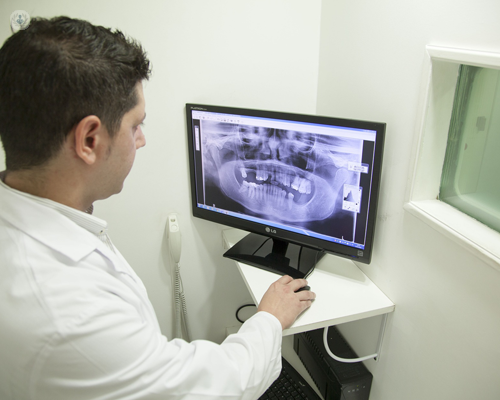Digital X-ray
Professor Mark Little - Interventional radiology
Created on: 06-20-2013
Updated on: 05-15-2023
Edited by: Karolyn Judge
What is a digital X-ray?
A digital X-ray, or digital radiography, is a modern type of X-ray that utilises digital sensors instead of photographic film, as with a traditional X-ray. The image captured is converted to digital data immediately and is available for review within seconds.

What does a digital X-ray involve?
The digital X-ray procedure is highly similar to traditional X-rays; it is the technology that is very different. Bursts of radiation still pass through the body and form an image based on how much radiation passes through the different organs, but rather than using photographic film to capture the image, digital sensors are used.
Digital X-ray sensors usually come in the form of active matrix flat panels made up of a detection layer over an active matrix array of thin film transistors and photodiodes. These sensors are able to convert the image into digital form in real time, allowing the doctor to view the results on a computer immediately.
Why is a digital X-ray done?
Digital X-rays, much like traditional X-rays, allow the doctor to examine inside a patient’s body. This may be useful to observe the extent of the damage done during an injury, including bone breaks and fractures. They can also detect masses in soft tissue, which could lead to the discovery of a tumour or other illnesses.
Digital X-rays are of particular interest in dentistry, where the rapid availability of the results means that a dentist can enhance the images by controlling the exposure in real time and therefore can obtain clear and detailed results that can be shared with the patient immediately. The clarity of digital X-rays makes them superior to traditional X-rays in terms of finding tiny fractures and imperfections in the teeth.
What are the advantages of digital X-rays?
Digital X-rays have several key advantages over other options:
- Clarity – digital X-rays are capable of producing very high quality images in which the doctor or dentist can observe the scanned part of the body in very fine detail
- Real-time enhancement – the ability to produce the images immediately means that the doctor can adjust the exposure in real time, making the images lighter and darker as needed to see particular aspects of the scan more clearly
- Speed – the results are available for review immediately
- Reduces radiation exposure – not only do digital X-rays produce high-definition images in seconds, they do so with lower doses of radiation than other X-rays, which is better for the patient
- Efficiency – in addition to being efficient in terms of the radiation used, digital X-rays save a lot of time and effort that would be spent creating, filing, and retrieving traditional X-ray results; digital X-ray results are available quickly and easily at the click of a mouse
- Avoids the use of chemicals for developing film
What are the disadvantages of digital X-rays?
- The technology is expensive
- Digital X-ray technology is generally less flexible and less portable than traditional X-rays.



